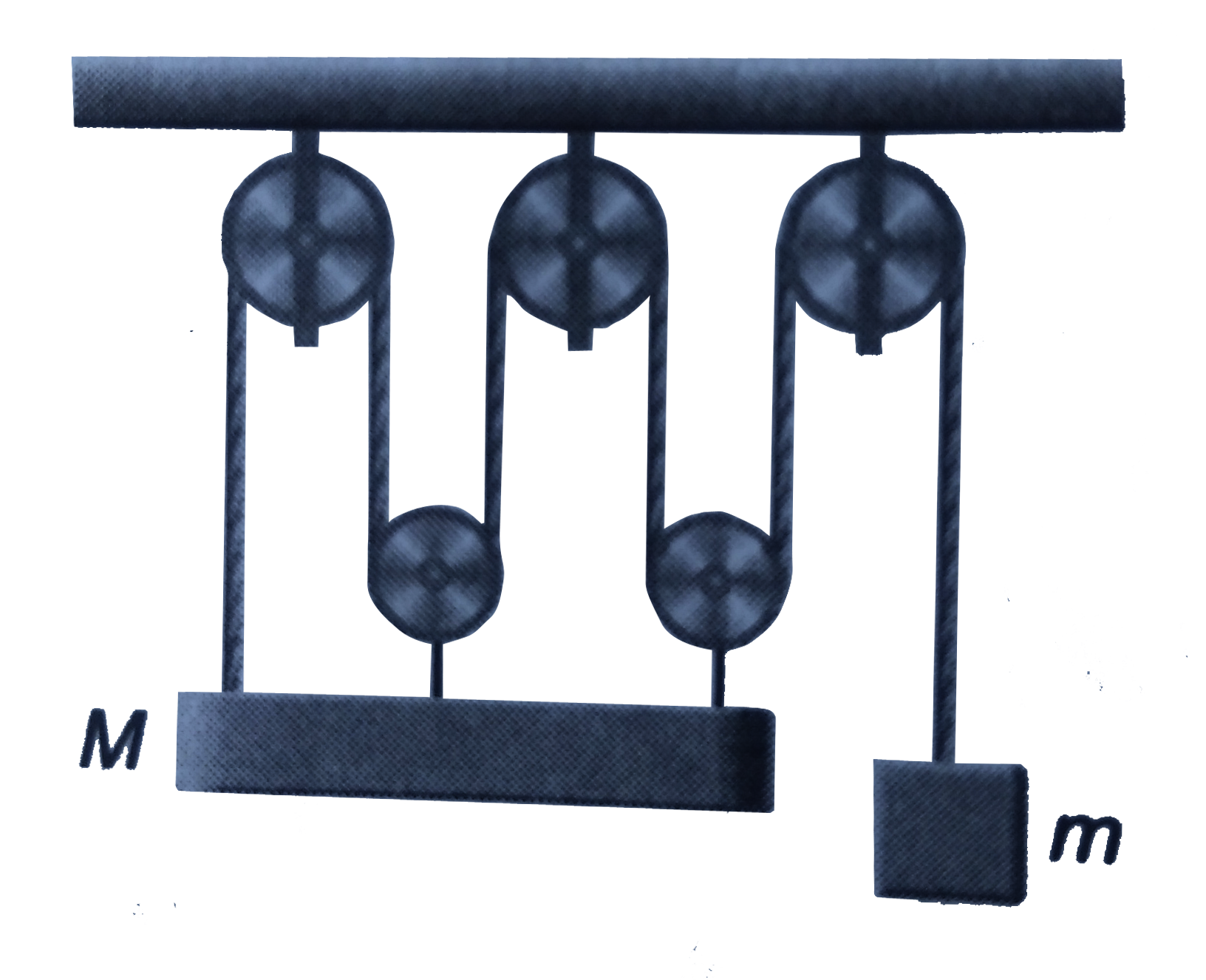Find the natural frequency of oscillation of the system as shown in figure. Pulleys are massless and frictionless. Spring and string are also massless. (Take π2=10)

π2Hz
√πHz
10√πHz
πHz
Let mass 'm' falls down by x so spring extends by 4x ,
∴T4=k(4x)
T=(16 k)x
Where T is the restoring force on mass m
∴F=12π√16km
f=2π√km=2π×√251=πHz

Topper's Solved these Questions
Similar Questions
Find the natural frequency of the system shown in figure. The pulleys are smooth and massless.

View SolutionFind the relation between acceleration of the two blocks m1andm2. Assume pulleys are massless and frictionless and the strings are inextensible .

View SolutionFind the acceleration of two masses as shown in figure . The pulley are light and frictionless and string are light and frictionless and string are light and inextensible.

View SolutionFor the system shown in the figure, the pulleys are light and frictionless. The tension in the string will be (Assume all surfaces to be smooth)

View SolutionThe is an arrangement of pulleys as shown in figure. All the pulley are massless and frcitionless and the strings used are inextensible. Each of these springs have a spring constant k. We define the stiffness of the assembly k1 as the force required to be applied at point A for its unit displacement.

Find k1 for n=2
View SolutionThe is an arrangement of pulleys as shown in figure. All the pulley are massless and frcitionless and the strings used are inextensible. Each of these springs have a spring constant k. We define the stiffness of the assembly k1 as the force required to be applied at point A for its unit displacement.

Find k1 for n = 1
View Solutionfind the acceleration of the block of mass M in the situation shown in figure. All the surfaces are frictionless and the pulleys and the string are light.

View SolutionThe is an arrangement of pulleys as shown in figure. All the pulley are massless and frcitionless and the strings used are inextensible. Each of these springs have a spring constant k. We define the stiffness of the assembly k1 as the force required to be applied at point A for its unit displacement.

What will he the most probable value of k1 for n =3
View SolutionFind the accelerations of two blocks. Assume pulleys and strings are massless and frictionless. Also assume the string to be inextensible.

View SolutionFind the angular frequency of small oscillation of block m in the arrangement shown. Rod is massless. [Assume gravity to be absont]

View Solution
